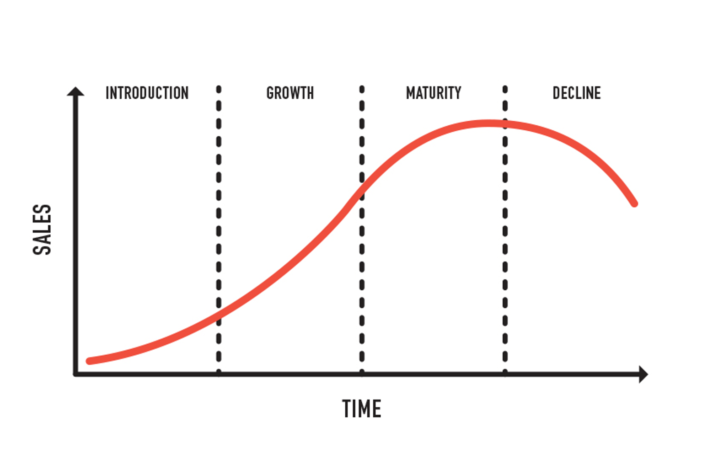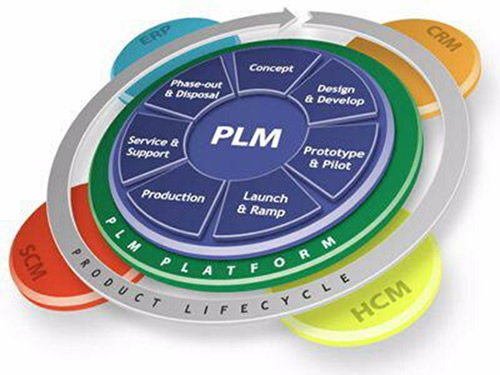Home > Blog > 7 Ways to Improve Agile Product Lifecycle Management
7 Ways to Improve Agile Product Lifecycle Management

When it comes to product development, it is a stark reality that if you’re not moving forward, you’re falling back. Product lifecycle management aims to keep the product moving forward by improving how it meets users’ needs and performs against the competition. But product lifecycle management can be enhanced by applying agile principles and practices that benefit both developers and customers.
Agile methodology brings a flexible, incremental approach to product lifecycle management. It allows product managers to adjust plans as needed in response to customer feedback, learnings from the development process, and external factors such as changing market conditions. It also ensures that the right capabilities are built, and the best product is delivered to market while minimizing risks.
This article explores the many benefits that can flow from adopting agile methodologies for product lifecycle management, and sets out ways to improve and optimize the use of agile in your product strategy.
What is the product lifecycle?
The product lifecycle looks at a product in stages, from initial concept and development to growth and maturity in the market, and then eventual decline and replacement.
The concept of the product lifecycle helps to guide business strategy and decision-making, such as promotion, pricing, marketing development, or cost-cutting, through an understanding of the stage that a product has reached.
The product lifecycle is often divided into five stages:
- Concept and development – Taking the product from the initial idea to market research and validation, and then building the product.
- Launch phase – When the product is first introduced in the market. Initial, incremental changes and improvements are made to the product as needed.
- Growth – Focused on growing market share for the product, and perhaps creating variants.
- Maturity – When the product is established. The focus is on revenue and profits, defending market share, and extending maturity through product modifications and improvements – and the stage of thinking about introducing new products.
- Decline – When market share begins to shrink. This can be due to various factors, such as consumers switching to newer products or changes in technology or lifestyle, which means the product no longer meets a need.
Product lifecycle management is therefore concerned with handling the various phases of a product to obtain maximum value and ensure minimum wasted effort and resources.
Many benefits can flow from effective product lifecycle management, including reducing time to market, creating a higher quality product that better meets customer needs, more sales opportunities, greater product safety and reliability, fewer errors, and less waste.
What is agile product lifecycle management (PLM)?
Agile product lifecycle management (PLM) applies agile principles and methodologies to product management. It is often utilized in software development and its ongoing refinements, improvements, and variations.
Critically, Agile methodology breaks down a development project into smaller cycles, called iterations. In every iteration, the team develops a specific working version of the software, called an increment, which stakeholders (for example, the customer, product owner, manager, etc.) review and provide feedback.

The feedback is then incorporated in the requirement analysis for the next software development iteration. This continual feedback loop and iterative process allows changes to be made as the software is being developed to ensure that the final developed product will meet customer and market requirements.
By contrast, traditional software development (SDLC) models, such as Waterfall, use a linear approach. Stakeholder interaction or feedback is not available until close to the end of the entire development process when the working product is available. This lack of flexibility means a lengthy planning process is required before the development process starts, with extensive documentation to specify product requirements – which cannot be modified along the way.
Advantages of Agile Product Lifecycle Management
Recent studies have shown a significant increase in Agile adoption within both IT and non-IT teams. In non-IT lines of business, agile adoption doubled year on year. Agile adoption within software development teams rose from 37% in 2020 to 86% in 2021.
The widespread adoption of Agile methodologies speaks to the importance of flexibility and adaptability in today’s fast-paced digital world. Organizations are finding that Agile’s cross-functional, iterative approach enables sustainable, customer-led innovation, reducing the risk of building the wrong product and increasing speed to market.

However, often significant barriers – such as inconsistencies in processes and practices, culture clashes, general organizational resistance to change – can make it difficult to implement Agile. In addition, Agile implementation and practice within each organization should also be seen as ‘agile’ itself, capable of modification to respond to changing circumstances and requirements.
With that in mind, let’s look at seven ways manufacturers and developers can improve and optimize their agile product lifecycle management.
7 Ways to Improve Agile Product Lifecycle Management
1. Move Your PLM to the Cloud
If your PLM isn’t cloud-based, it’s time to move into the future. Only cloud-based solutions can provide the agility and data availability needed to remain efficient and competitive, and support the development of next-generation highly configurable, smart products.
2. Do Not “Lift and Shift” Existing On-premise Solutions
Your existing processes will probably be ill-suited for a one-to-one shift into a cloud solution. Thoroughly research the possibilities of cloud PLM solutions, and re-imagine your existing processes in light of your research to fully unlock the potential of the cloud.
3. Total Transformation, Not Incremental Change
Think in terms of total transformation, not incremental change, to obtain the full value of cloud-based PLM. To realize the full potential of new technologies – such as the digital twin and digital threads, AI, IoT, and high-performance computing – they must be deployed alongside modern PLM tools in the cloud.
4. Apply Out-of-the-box Processes Where Possible
Many leading cloud PLM solutions include out-of-the-box processes that are based on best practice industry standards. Keeping customization to a minimum ensures your processes conform with best practice, and ensures updates are easy and cost-effective to implement.
For example, with WSJF, RICE and MoSCoW baked into craft.io, you can get straight into prioritization, with no need to waste time on spreadsheet formulas. Each framework’s algorithm automatically calculates item scores based on your chosen criteria, saving time and effort.

5. Remove Silos
Break down the barriers between business and IT to embrace a cross-functional future. For example, this allows you to connect the value locked in client data with the ability to roll out new capabilities rapidly, guiding new product development that will meet customer needs and generate additional revenue streams.
6. Clearly Define Your Product Strategy
Have a clear product strategy that embraces your:
- Vision for the product
- Goals, in terms of market opportunity and development time-frames. Consider what success looks like.
- Initiatives, having a high level view of what you need to do to achieve the ultimate goal of your strategy – such as reducing costs or improving product performance.
7. Have a Roadmap that Connects Strategy to Features
Tie everything back into a single product system of record, and ensure everyone is in the loop and speaking the same language. By keeping roadmaps transparent and synced to current plans and OKRs, you can maintain true alignment as your product evolves.
Optimizing Your Agile Implementation
Agile product lifecycle management can provide you with the essential flexibility, accountability and adaptability to meet the demands of today’s dynamic digital world.
Using a robust cloud-based product management platform specifically designed for agile management is key to your success. It allows you to establish a single source of truth for managing the entire product lifecycle, with the ability to share critical data across all relevant business and IT teams as needed. Optimizing your agile product management this way will result in consistent improvements and higher quality products.


